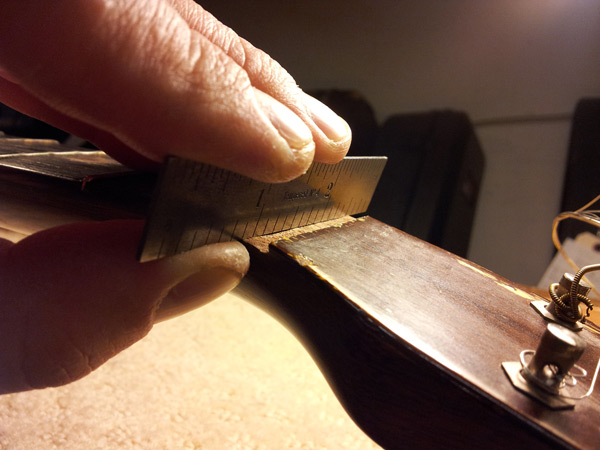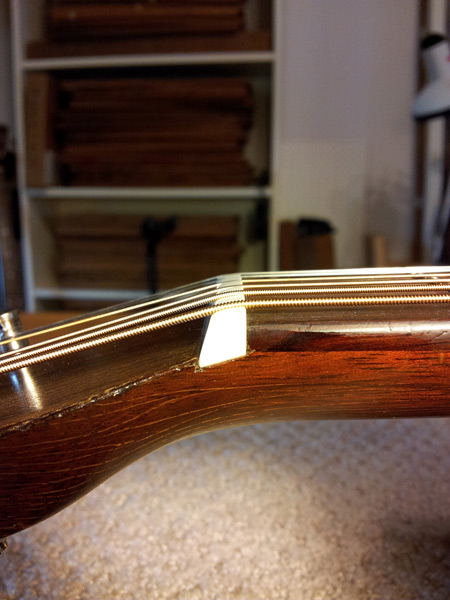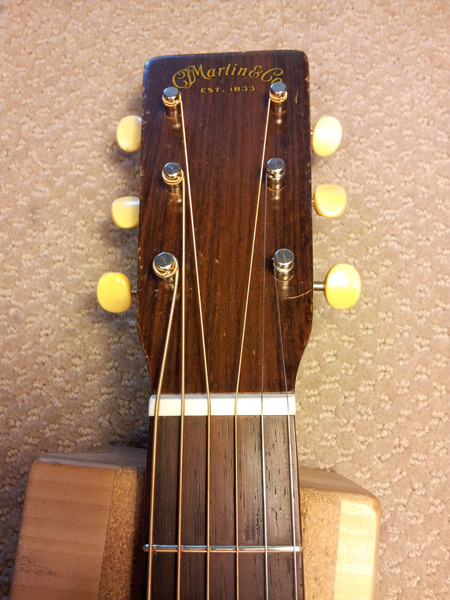360.261.0341
5321 NE 30th Ave., Vancouver, WA 98663
By Appointment Only

Rick Reiss, Luthier
Authorized Warranty Service for C. F. Martin Guitar Co. and Taylor Guitars
In this perspective I'm holding the old nut above the upgraded nut to contrast the string/course spacing. The string spacing of the installed upgraded nut has an overall wider string spacing from 1st to 6th. However each individual pair of strings is spaced significantly closer. The result is that each pair is more obvious to the hand. When the space between each pair is too wide, it feels confusing, imprecise and unpredictable to play. As if there were 12 individual strings instead of 6 pairs.
This picture was taken after cleaning out the old hide glue from a vintage martin. Notice how the center of the nut shelf is "gappy" and only the ends make contact.
This is a perfectly profiled nut shelf. With a consistently flat seat for the nut to rest upon. I cannot overemphasize how important a good fit is to the quality of tone from both electric and acoustic instruments. Having full contact ensures the best connection for the circuitry of the instruments voice. Poor contact will result in a loss of volume, projection, balance/range of tone, and overall efficiency.
This is the finished nut. There is a slight bevel to the left which helps keep the string pressure centered. The slot depth is minimal so the string doesn't "drag" through the slot when tuning. Lastly, notice that the string is making contact across the entire top of the nut. This is immensely important for the strings to stay in tune. The less contact the string has against the top of the nut, the less the instrument will stay in tune.
This is the top view of the finished nut. This view, simply shows an ideal string spacing. It shows how wide the spacing should be, and also demonstrates how evenly spaced the centers of each string should be from one another.







